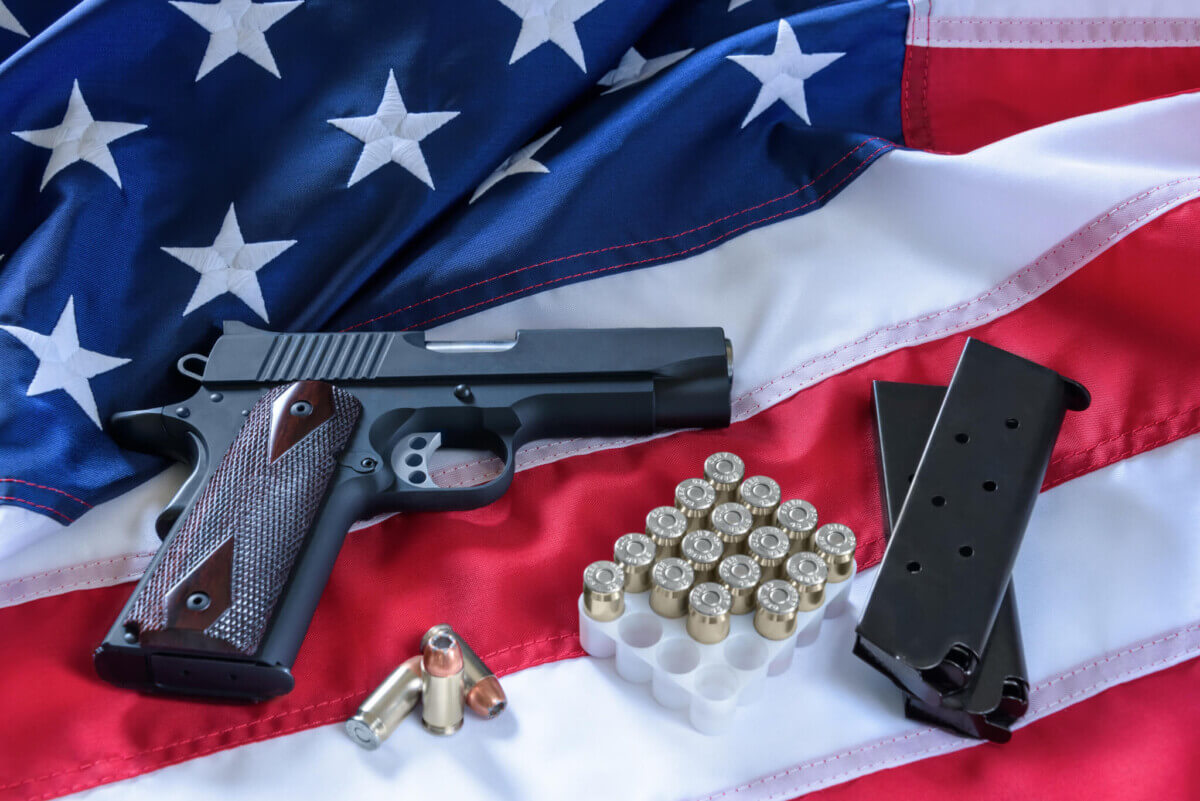
(© Olga Mendenhall - stock.adobe.com)
NEW YORK — The guns used in violent crimes often travel over state lines before reaching criminals' hands. I-95, stretching from Miami to Maine, has long been seen as the main highway facilitating the transport of illegal firearms over state lines (typically from Southern states to the Mid-Atlantic and New England), earning itself a nickname as the “Iron Pipeline.” Now, new research, published in JAMA Network Open, indicates many more “Iron Pipelines” exist throughout the country, with each one playing a significant role in the interstate transport of firearms used in crimes.
Initially, study authors set out to identify possible gun trafficking routes along the Interstate Highway System, a vital part of the transportation network. The IHS accounts for roughly one-quarter of all vehicle miles traveled in the United States.
“We hypothesized that counts of traced firearm transfers between states connected via major interstate highways would be greater than what we might expect based on their population sizes and geographic proximity, and that traced gun transfers would be greatest along the I-95 corridor,” says Christopher Morrison, Ph.D., assistant professor of Epidemiology at Columbia Mailman School of Public Health, in a media release. “Understanding how guns flow around the country is important for identifying trafficking routes and the impact that each state has on its neighbors.”
Via publicly available interstate gun trace data gathered by the Bureau of Alcohol, Tobacco, Firearms, and Explosives, the research team measured interstate transfers of firearms used or suspected to have been put to use in crimes spanning 2010-2019. After creating 48 separate datasets (one for each destination state of interest), the study authors compared the count of guns used in crime traced to interstate purchases for states with interstate highway connections and states without those connections.
The ensuing results showed that between those nine years, a total of 526,801 guns used in crimes in the lower 48 of the United States were traceable back to interstate purchases. Multiple interstate highways were likely involved in this gun flow. Crucially, researchers uncovered previously unidentified “Iron Pipelines” throughout the country. They also determined that gun traffic along the I-95 corridor is far more complex than previously thought.
Prior findings by the same researchers had already shown that the inflow of guns from other states undermines local gun supply-reduction strategies. This consequently leads to a drain on limited resources, contributing to the overall burden of gun crime in the United States. This latest report now indicates there may be a synergistic relationship at play between interstate connection and gun law strength regarding trafficking patterns.
Between 2010-2019, 275,345 people died, and 803,393 visited emergency departments due to interpersonal shooting events. In just 2019 alone, over 30,000 guns traced to in-state and interstate purchases underwent use in violent crimes like assault, robbery, and murder. Besides the direct impact of gun crime on health and safety, exposure to violence can also have lasting implications like psychological effects and an increased risk of cardiovascular disease and premature mortality.
“Our study showed that interstate gun flow has critical implications for gun violence prevention, as gun transfers across state lines can undermine local gun control policies,” notes Prof. Morrison, who is also affiliated with the School of Public Health and Preventive Medicine at Monash University, Australia. “By identifying highway routes regularly used for transfer of guns used in crimes, this study provides law enforcement and public health authorities with critical areas for intervention. Our data offer valuable insights into the origins of interstate crime guns, a key public health intervention point.”
“We conclude that national policies and inter-state cooperation are needed to address this issue,” adds Morrison.










